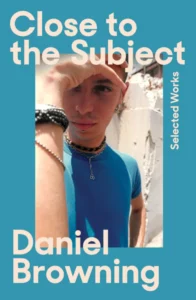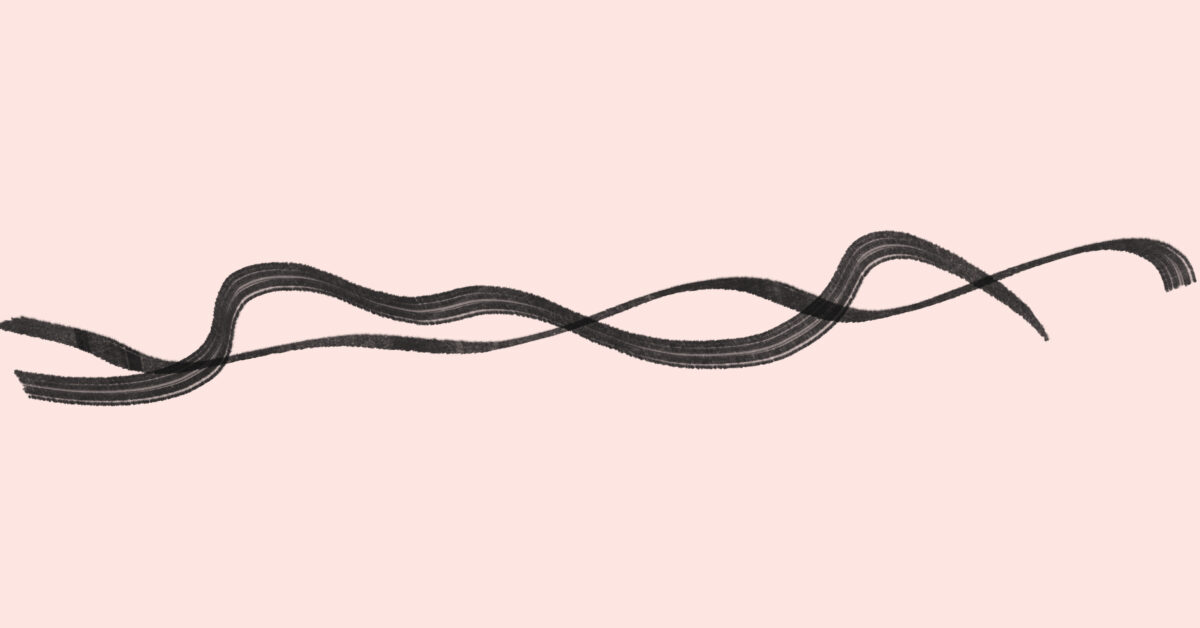I’m the first to admit I’ve tried to unmake journalism, or at least smooth its edges. Rather than break stories, I’ve been broken by them. I’ve never won a Walkley, or even been nominated for one. But then, I decided to spend nearly three decades of my life in a highly competitive industry driven by ego and the cult of personality, fortified by whiteness and normativity. A place where I have never really belonged, patrolled by those with an inborn unquestioned objectivity — the heritable right of whiteness. The lie of that objectivity, that anyone can pretend they are without biases or that they can be excised from their work, has been exposed. In the global reckoning with power spurred by the Black Lives Matter movement, the crisis of objectivity in journalism (at least in the English-speaking world) has been experienced as something of a delayed reaction. Perhaps that’s because the profession is so blindingly white. In 2023, we have reached critical mass globally in terms of black and non-white journalists, who are largely responsible for the yielding we see in many newsrooms and media organisations. Now, my embedded blackfella subjectivity and my closeness to the subject of my journalistic enquiry — other blackfellas — is considered to be an asset rather than a liability.
When I began my career in 1994, my training wage was partly subsidised by the Commonwealth — unlike other ABC cadet journalists for whom the corporation bore financial risk and investment entirely. The mandatory term of my cadetship was eighteen months, while my colleagues would graduate after only a year. I watched blackfella colleagues walk away from secure employment with the national broadcaster, citing structural or interpersonal racism. I focused on the racist assumptions or language in stories, argued the case with sub-editors and secretly kept a shame file of the worst examples. I was called, behind my back but faithfully reported by friends and allies, a “black bum boy” by a female colleague, while another — from a regional newsroom, whom I had never met — told a party of ABC staff that she knew precisely the mechanics of how I’d got my plum job reading news at Triple J. Unfortunately, she didn’t nominate my journalistic talent, my clear voice or my gift for storytelling. I endured years of episodic bullying from an Indigenous colleague, who through a vampiric half-smile would occasionally greet me with a twisted version of the term “countryman”, strongly emphasising the first syllable.
I didn’t rise above the slurs or the bullying; I just never let them alter the course I saw before me. Storytelling is not so much a job as simply what I do. Cathy Freeman once described her impulse to run as being wholly natural and embodied, akin to breathing. I feel the same way about storytelling. My late mum, Rose, who wasn’t given to hyperbole, once said, “you are a great storyteller”. During my cadetship, a dearly loved colleague who often worked the late shift would leave encouraging notes in the internal messaging system while gently correcting my mistakes. When I departed the newsroom we shared for another interstate, she girded me electronically with the words, in caps, “YOU GO BROTHER”. Those emphatic words have fired me ever since.
Recently, I had to cast around for peers who might vouch for my credentials. I had received an unsolicited offer to teach journalism part-time at a university. The first offer laid on the table during negotiations was probationary, with the rank of senior lecturer. As I prepared myself for the challenge, a career diversion with additional workload and potential loss of income amid a sea of expectant or bored faces, it became clear that the offer wasn’t feasible and I withdrew. The idea that I should teach journalism unfortunately took serious hold: instead of complaining about it, I could effect real change. My tenure would focus entirely on the development of a first-year course on the principles and ethics of care in the telling of Indigenous stories, and would be a practical guide for working journalists.
Galvanised, the university representative came back with an offer too good to refuse. Not only would I be appointed to the rank of industry professor in recognition of my thirty-year career as a journalist, the deal was sweetened by another offer: to be appointed chair in Indigenous journalism — the first such appointment at an Australian university. Unfortunately, what I thought was a done deal was actually something more of an ambit claim. As I waited for a formal offer, I was surprised to learn that the appointment itself was blocked by staff in the journalism department, which had previously welcomed more than a few former colleagues. I began to seethe: another example of the exclusion I’d felt as a cadet journalist, performed in daily microaggressions, and the bitter realisation that no matter what you did, your white boss and probably half the newsroom didn’t trust or believe in you. As for the appointment, I was assured by the university rep that it wasn’t personal — on the basis that my name wasn’t mentioned. I’d like to believe that’s true.
I’ve encountered strangers, most memorably a Sydney taxi driver and — randomly — a Melbourne council worker, who recognised the lilt of my voice and told me how the stories I told on air had enriched their lives and deepened their understanding. Out of the blue I’ve had ABC colleagues and listeners email the kind of plaudits that I would go back to, when self-doubt and a lack of faith, not to mention the trauma that underpins blackfella experience and which we negotiate vicariously every day, threatened to overwhelm me. A plain-speaking blackfella writer who, like my mum, isn’t known for hyperbole did indulge somewhat when she described my voice as being like “warm honey trickling over a granite rock next to a rainforest stream”. My sister had to bite her lip when a new acquaintance, noticing the surname we share, began reeling off my CV. Once she was versed in my entire work history, when the acquaintance came up for air, my sister urged gently, “Yes, I know him. He’s my brother.”
The lonely exercise of seeking endorsement from my colleagues in journalism for the professorship wasn’t utterly pointless — it forced me to confront some hard truths. I realised how solitary my practice as a journalist had been, how I’d lost friends rather than made them, and how in the unsafe even toxic environments that media organisations — and universities, for that matter — can often nurture, colleagues (and countrymen) had morphed into competitors. Instead of unmaking the craft to fit my own values, I had learned bitterness and self-protection just to survive. No surprise then, when in the midst of a fight, I turned my head to see who was in my corner I found there was no-one there.
I am a storyteller — nothing more. As a journalist I have often speculated on the place where I sit, my positionality on the spectrum of positionalities, and where my writing fits among the genres of storytelling. It is probably another vain and pointless exercise, given the polarised nature of the media in Australia (Murdoch and the rest). Another thing that obscures my work is the public appetite for and newsworthiness of stories which represent blackfellas as broken and dysfunctional. This metanarrative drove the hysteria and nightly horror of sexual abuse claims in remote Indigenous communities since disproven which led to the Howard government’s military-assisted Northern Territory Emergency Response in 2007. There are other ideas, tropes and fantasies that mystify who we are — for example a wilful blindness to our suffering as self-inflicted, utterly disconnected from the original sin of dispossession. An almost blithe disengagement with “our” issues as too complex and marginal not to mention the strange idea that our “voice” should be singular and unilateral also complicates matters. For years it was standard media practice to put up one rancorous, newsworthy voice from the unelected, right-wing black commentariat on any particular issue and that was that.
Precisely because we are supposed to be incapable of objectivity, and therefore not to be trusted, we are often excluded from the national conversation — of which we are sometimes the subject. The moral panic over youth violence and lawlessness on the streets of Alice Springs — fed by overheated media reporting — is a good example. In such debates, our collective rage or apathy is pathologised — we don’t know our own minds, we can’t agree, or we can’t articulate what we feel or know in terms that whitefellas and other settlers can understand. According to this twisted logic, it seems to follow that we are stupid, we are undeserving, and even — in the worst case scenario — a broken people without hope. That we are like every other population group with many strident voices (on a matter as significant as constitutional recognition and the Voice to Parliament, for instance) is always characterised as a fault. Broadly I have tried to puncture the silence and mystification that constellates around the thing we call Aboriginal art. But at a deeper level I have always tried to give voice — to literally surrender the microphone (another example perhaps of how antithetical my practice is to the profession).
It reminds me of a moment that perfectly illustrates the fine balance and compromise we as Indigenous journalists have to strike. A senior artist from an artmaking community in the East Kimberley had won a generous biennial prize for her entire body of work, canvases loaded with black and white ochre mined on her country with spare iconography drawn exclusively from the one ancestral story. She was in a wheelchair in a gallery in Melbourne which had been hung with her almost calligraphic paintings. I sat opposite her with my trusty brick-shaped 702 Sound Devices recorder and a well-travelled microphone. I leant in, and as I finished my first question she did the strangest thing. She gently slipped her long fingers around the mic and, completely ignoring my question, told the story that animated her work. Her microphone technique was such that she popped wildly on the plosives, and parts of the recording were so badly affected by peak distortion that it could not be salvaged. I could have simply wrested the mic away, but at that moment it seemed too brusque, even disrespectful — if not extremely rude. Instead, I listened deferentially as she pointed out the almost totemic signs of a superhuman odyssey, feeding back on itself in an eternal loop.
It may seem insignificant but in that moment I had a choice: be a journalist or be a blackfella. And I’m here to tell you that it wasn’t the first or indeed the last time. Unless we excuse ourselves from the network of social responsibilities that we are born to, those obligations — to deference, avoidance, asset sharing — can and will complicate what we do. For years I made it a policy not to report on my own community, despite there being occasion to do so, because I didn’t want to be targeted by my bosses and accused of bias, of subjective journalism, and a failure to uphold the ethics that bind those journalists who actually believe in the profession — who exercise its power and discharge its responsibilities. By the same token, the idea that the only value of my work is in its embedded blackfella subjectivity is also an assumption worth challenging. As a black journalist, I have covered the entire spectrum of generalist news reporting including federal elections, state politics, courts, police and emergency rounds, the arts, sport and youth affairs. Black journalists belong in every newsroom, covering every story; but despite reaching critical mass, not every newsroom or media outlet will welcome us or publish the stories we write. We will be trailed by the stink of their assumptions — that we are undeserving, incapable of their standards of objectivity and can’t be trusted as journalists.
The risk I have run in unmaking journalism to make it less culturally unsafe and more inclusive has paid off, while separating me from my white colleagues who stand by a kind of editorial distance I can’t even fake. I have enjoyed rare access to some extraordinary, unstintingly generous people. I have knelt down and breathed dust, inhaled the cleansing fumes of burning eucalypts and been humbled by the experience. I have walked country and held axes and grinding stones laid down by the ancestors in the shadow of drought and glaciation as their teeming rivers dried up fifteen thousand years ago. I have watched their bones return home. I have tracked intrepid ancestors who explode the historical myth of an isolated, defeated and incurious people without power and agency confined to missions and reserves. I have seen the bullets lodged in shields once borne by our warriors but now secreted in drawers in the temperature-controlled vaults of natural history museums overseas.
I have listened to stories of soul-crushing cruelty told by the survivors of a notorious Aboriginal boys home; how they were welcomed with the balled fists of a sadistic manager who did much worse while they were chained to a Moreton Bay fig tree in the grounds of the home. Of children separated from their kin on the bustling platforms of Sydney’s Central Railway Station as commuters passed, blind to the obscenely public tragedy unfolding before their eyes, and wept for the loss of innocence. I have watched an ailing, now finished senior artist shift in her wheelchair to sing up to her painting in the National Gallery of Australia. I have listened to another, also now finished, describe the buffalo attack that maimed her but which triggered a conceptual leap; a radical departure that bridged the moment of creation in ancestral stories with individual memory, the earthly and the corporeal. I have seen the anguished faces etched in the rock of the sandstone escarpment where militiamen forced Dharawal to their deaths in the undeclared war of 1817. I have listened to the Pitjantjatjara version of the wanambi story that animates the canvases and churns the riverbeds and waterholes of the Central Desert. To create a monument in sound, I have spun a bullroarer just like those that summoned the initiated to men’s business on K’gari, and miked the low thud of a possum skin drum stretched across the lap of a Wiradjuri woman.
I do not hesitate to admit that I have been both a witness and an actor in these events. My stories are always collaborative, and I try to produce content that represents not simply the who, what and why — but the cultural context in which these dialogues take place. I no longer excise myself from my stories, as I used to do (although I always insist that my team practise a simple rule: you are always the least important person in the room). The process of excavating these stories, some buried in lowly-subscribed art journals and the torpid depths of the online version of ABC News, crystallised in my mind the kind of journalism I practise. It is one which embeds my blackfella subjectivity. It centres my story, but only to make clear that I am in relationship with the person I am conversing with. By establishing my own credentials, I am drawing a reflexive enclosing circle around the conversation — its cultural context.
This relationality drives my journalism, and I feel absolutely no shame in saying that. I am discharging my responsibilities as a faithful storyteller, to document our unending story, an epic that transcends time but which affirms place as the core of our collective being. I have sought to build or rebuild trust, when journalists are among the least trusted professionals working today. I have unswervingly put relationality at the core of my praxis. This reflexive approach has drawn out personal truths that any other would have failed to elicit. So, if you want to tell our stories, or even understand what drives our way of being, integrate that deep cultural knowledge — we are both relational and reflexive, utterly connected to place and always in relationship to kin, the mob, and every lifeform that inhabits country — from the mountains to the claypans, from the hidden valleys to the beaches.
When I was first approached to submit the works that would become the spine of my book [Close to the Subject, forthcoming from Magabala Books], I hesitated. I doubted that anyone would be interested enough to read let alone buy it. It was Ellen van Neerven who, on hearing my excuse-making as to why the publishing contract was gathering dust in my overflowing inbox, chided that I hadn’t learned the detachment from my words that must be a necessity to a literary career. They would know. So here we are. Implicit in those pages is an invitation: to weigh in to the diverse textures, subtexts and genres that make up my work. Criticise it, question its assumptions and by all means, disagree — but engage with it. Above all, I want you to feel some of the power, the urgency and the generous spirit of those voices that I have consistently sought to amplify in my work — even the reverberant echoes of the stifled and the unheard. It’s not mine, it’s theirs.
 This article is an extract from Daniel Browning’s forthcoming essay collection ‘Close to the Subject’, which will be published by Magabala Books in September 2023.
This article is an extract from Daniel Browning’s forthcoming essay collection ‘Close to the Subject’, which will be published by Magabala Books in September 2023.



